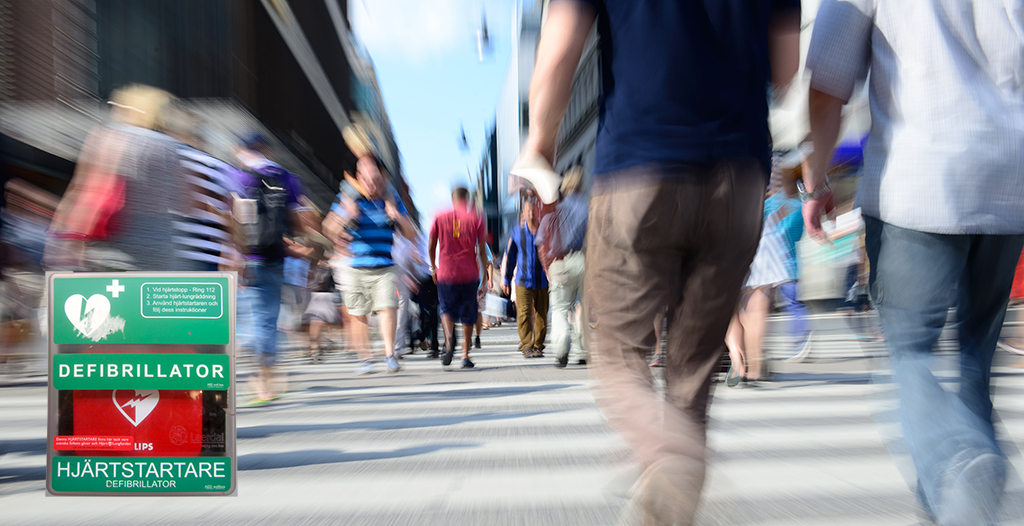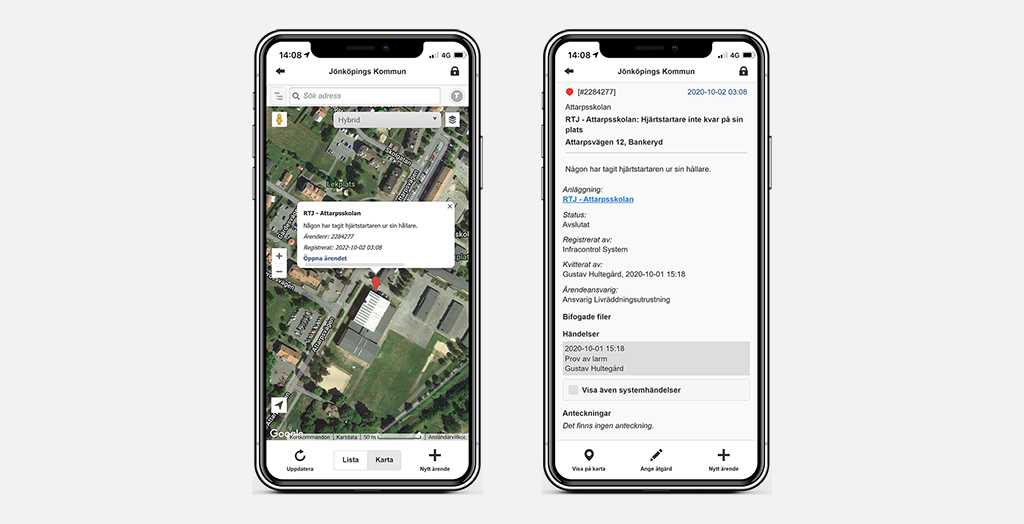
Photo: AdobeStock
Ten thousand people suffer from cardiac arrest in Sweden yearly, and only 600 survive. Quick response with CPR and a defibrillator increase the chances of survival immensely. Jönköping municipality has started to connect defibrillators to their IoT network to ensure this vital equipment is always available. An alarm is immediately sent through Infracontrol Online to the municipal staff if a defibrillator is moved. The staff then ensures that it is placed back or replaced if necessary.
Many of Sweden’s municipalities utilize new innovative applications of IoT to increase the control of their infrastructure. Small, low-powered sensors and new communications networks make it possible to monitor things that previously have been expensive and difficult to monitor. A good example is the monitoring of defibrillators. Gustav Hultegård, Fire Cheif at the rescue service in Jönköping municipality, explains that they already have had use of the monitoring of defibrillators:
– We have already had several incidents with the defibrillators, which have triggered alarms. The alarms are first and foremost sent to the local janitor (or the like), but also to our coordinator. When a defibrillator has been used, it does not only need to be placed back, electrodes need to be checked, and it needs to be reset.
Monitoring that saves lives
Jönköping municipality monitors many types of technical equipment with the help of IoT sensors connected to Infracontrol Online. Some of these are life-saving equipment such as lifebuoys and defibrillators.
– In a critical situation, it is crucial that the equipment is at its place and working, says Gustav Hultegård. Previously we had to do rounds to ensure everything was in order, but with the alarms, we get immediate notification when one is moved.
He says that many have hesitated to put up defibrillators due to the risk of them disappearing, but this is changing when they can be monitored.
– We will continue the work, and we hope to connect even more of our life-saving equipment within the municipality in the future, says Gustav Hultegård.

The staff quickly get information from Infracontrol Online when life-saving equipment has been moved.
IoT makes it possible to fix problems early
Jönköping Energi has built the IoT-network in Jönköping. It is a so-called LPWAN network (Low Power Wide Area Network), a standard for connecting battery-powered sensors in regional, national, or global networks. The network allows IoT devices to send data to Infracontrol Online wirelessly.
– LPWAN means that the sensors can be small and energy-efficient, says Patrik Casta from Jönköping Energi. The network we built gives the municipality an infrastructure for IoT applications, making it possible to monitor almost anything.
Reimer Selero, Operations Manager at Streets, Parks, and Forests at the Technical Department, sees strong possibilities with the new technology:
– IoT allows monitoring functions and fixing issues before significant problems occur. We use Infracontrol Online to handle fault reports and opinions from the citizens. By connecting technical alarms, we get complete control and a simple way to handle each issue, no matter where the information comes from.
One example he mentions is monitoring humidity and temperature in road pavements using IoT sensors, which they base the winter road maintenance on.
20 examples of useful IoT-applications
- Alarms from technical equipment such as streetlight controls, pump stations, ventilation sites, heat cables, escalators, etc.
- Buttons to call for attention regarding littering, etc.
- Open hatches on things like streetlight cabinets
- Leaning or twisted objects, like traffic signals or direction signs
- Fill level in bins and recycling containers
- Stolen objects – Mechanically or by positioning
- Humidity and temperature in machine rooms and technical constructions
- Humidity and temperature in walls, floors and foundations
- Humidity and temperature in soil and pavement
- Humidity or water on grounds or floors
- Clogged well screen
- Power failure – Critical equipment such as lights or HVAC-systems
- Water levels and water flow in watercourses and lakes
- Flow in lines and pipes
- Groundwater levels
- Air quality (multiple parameters)
- Light levels – Direct or indirect
- Noise pollution
- Broken glass
- Precipitation (rain or snow)








